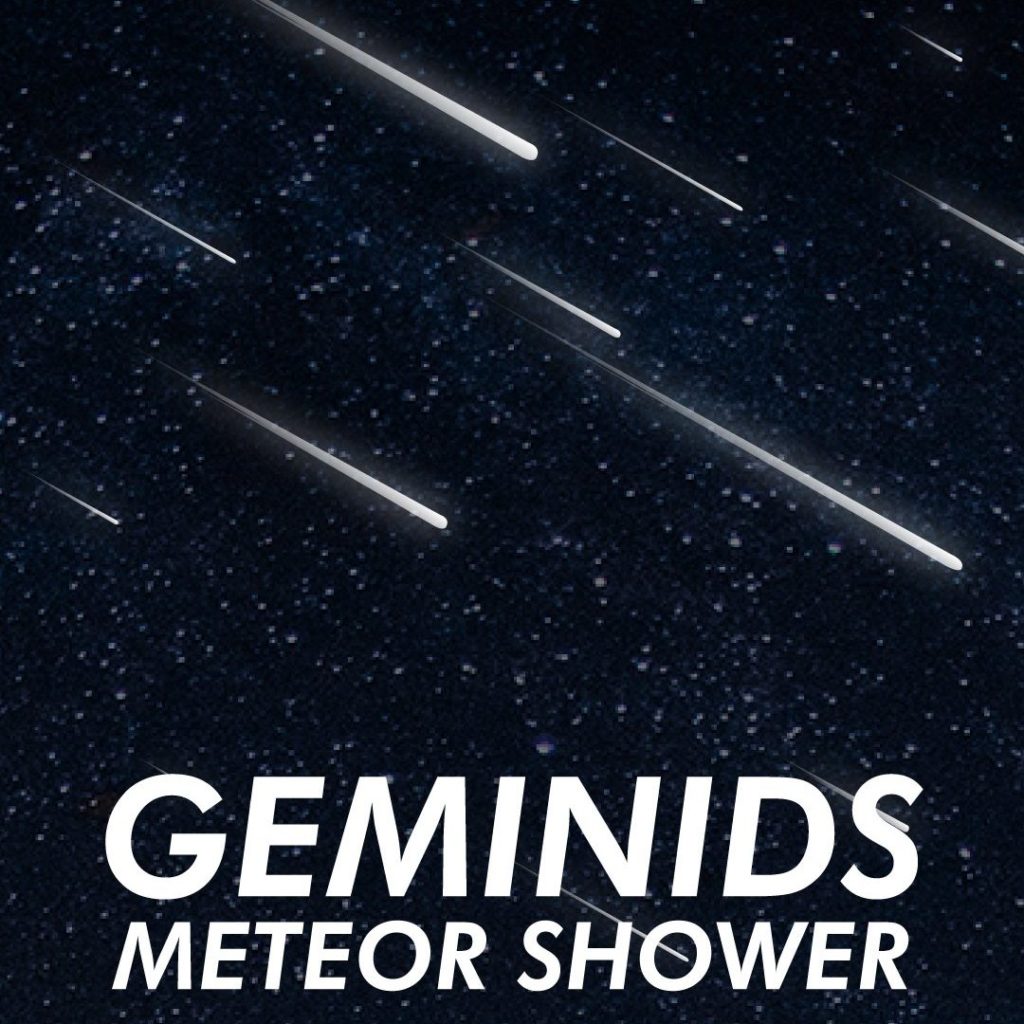
One of the old reliables of the night sky—the Geminid Meteor Shower—is now making its annual visit. Active for around a dozen days in December, it will peak on the night December 13/14. The Moon will then be near its first quarter phase, rising at noon and setting a little after 11 p.m. This means that, away from city lights, the sky will be dark when the shower peaks at up to 120 meteors per hour just after midnight.
On any given night, random meteors occur when celestial debris sporadically enters Earth’s atmosphere. Meteor showers are more predictable, typically include numerous meteors rather than a random few, and are usually linked to comets. When comets come close to the Sun, ices on the surface vaporize and stream away from the comet. Dust and other small particles are carried along with the gases. Over time this material spreads out over the entire orbital path of the comet. If Earth’s orbit happens to intersect the orbit of the comet, Earth can sweep up these particles which burn up in our atmosphere, resulting in the dramatic streaks of light interchangeably known as shooting stars, falling stars, and meteors. In fact, many meteor showers are linked to specific comets. For example, both the Orionid and Eta Aquariid meteor showers derive from remnants of Halley’s Comet.
 The Geminids, however, appears to be an exception to the link with comets. In 1983, astronomers discovered a celestial object now known as 3200 Phaethon. Its orbit matched that of the Geminids, thus giving reason to believe that it is the source of the Geminid Meteor Shower. The curious thing is, Phaethon is not a comet, at least not in the typical sense. It has a rocky surface and scientists designate it as an asteroid, a type of body that, due to its rocky or metallic composition, doesn’t see its surface vaporize (meaning no source for potential meteor showers).
The Geminids, however, appears to be an exception to the link with comets. In 1983, astronomers discovered a celestial object now known as 3200 Phaethon. Its orbit matched that of the Geminids, thus giving reason to believe that it is the source of the Geminid Meteor Shower. The curious thing is, Phaethon is not a comet, at least not in the typical sense. It has a rocky surface and scientists designate it as an asteroid, a type of body that, due to its rocky or metallic composition, doesn’t see its surface vaporize (meaning no source for potential meteor showers).
Perhaps Phaethon accumulated a debris cloud after bumping into another asteroid. Another possibility is that Phaethon is actually a dead comet, with all of its ice vaporized by repeated close approaches to the Sun. A third idea, one that has gathered support in recent years, holds that it might be a relatively rare body known as a rock comet, discharging rock particles, rather than gases, when heated by the Sun.
While the origin of its debris cloud remains a mystery, other characteristics of Phaethon are pretty well established. It’s a type of asteroid, termed “Apollo”, whose orbit crosses that of Earth but in fact, spends most of its time further from the Sun than Earth. Phaethon orbits the Sun every 524 days, with an elliptical path that takes it from 13 million to 223 million miles from the Sun. It has the distinction of passing closer to the Sun than any other named asteroid (of course that can change at any time as astronomers discover and characterize more asteroids).
Whatever the true nature of Phaethon, the meteors produced by its debris are worth learning about and seeing. Lowell Observatory will offer a perfect opportunity to do this on Friday, December 14, with special evening programming.